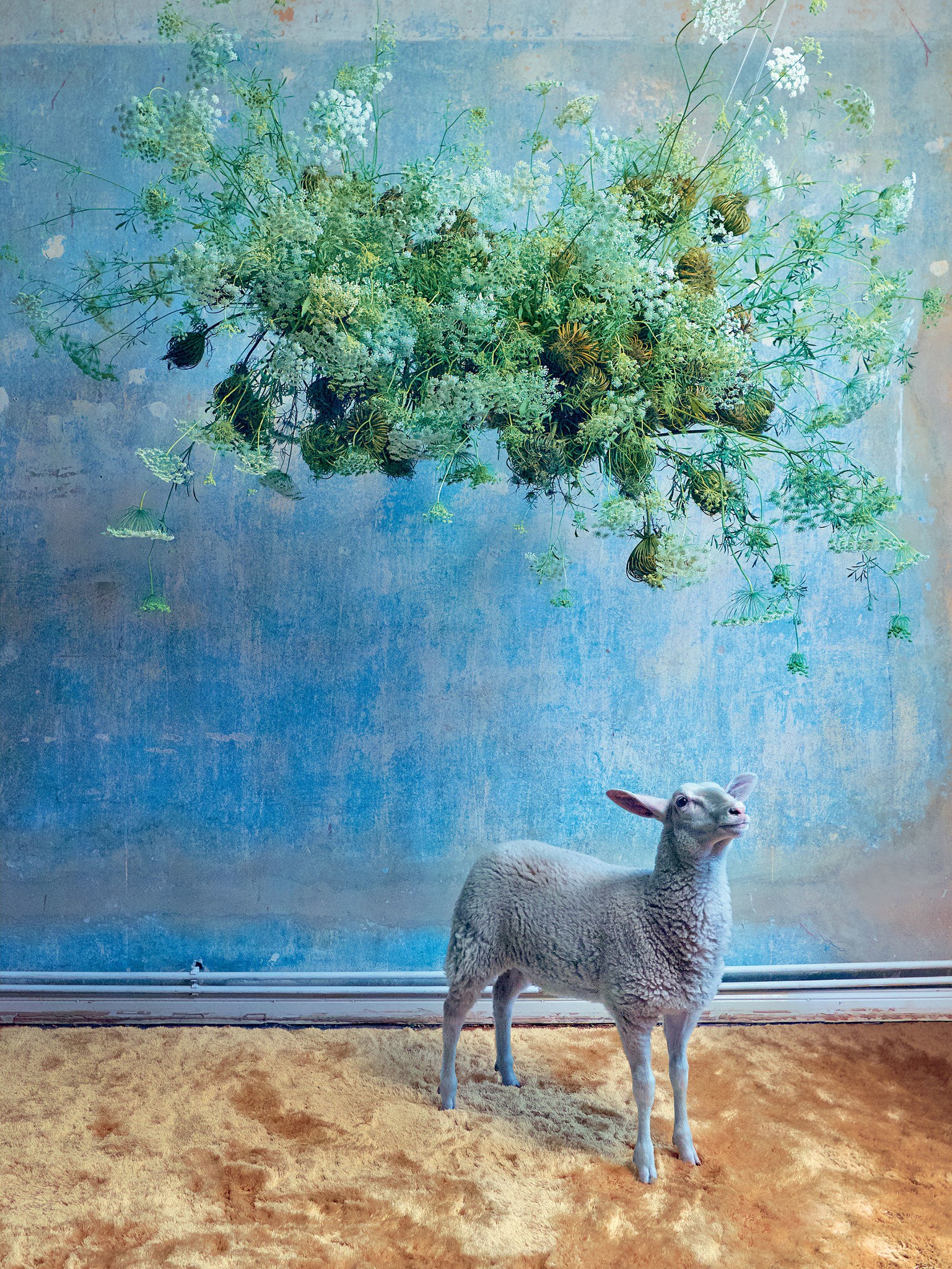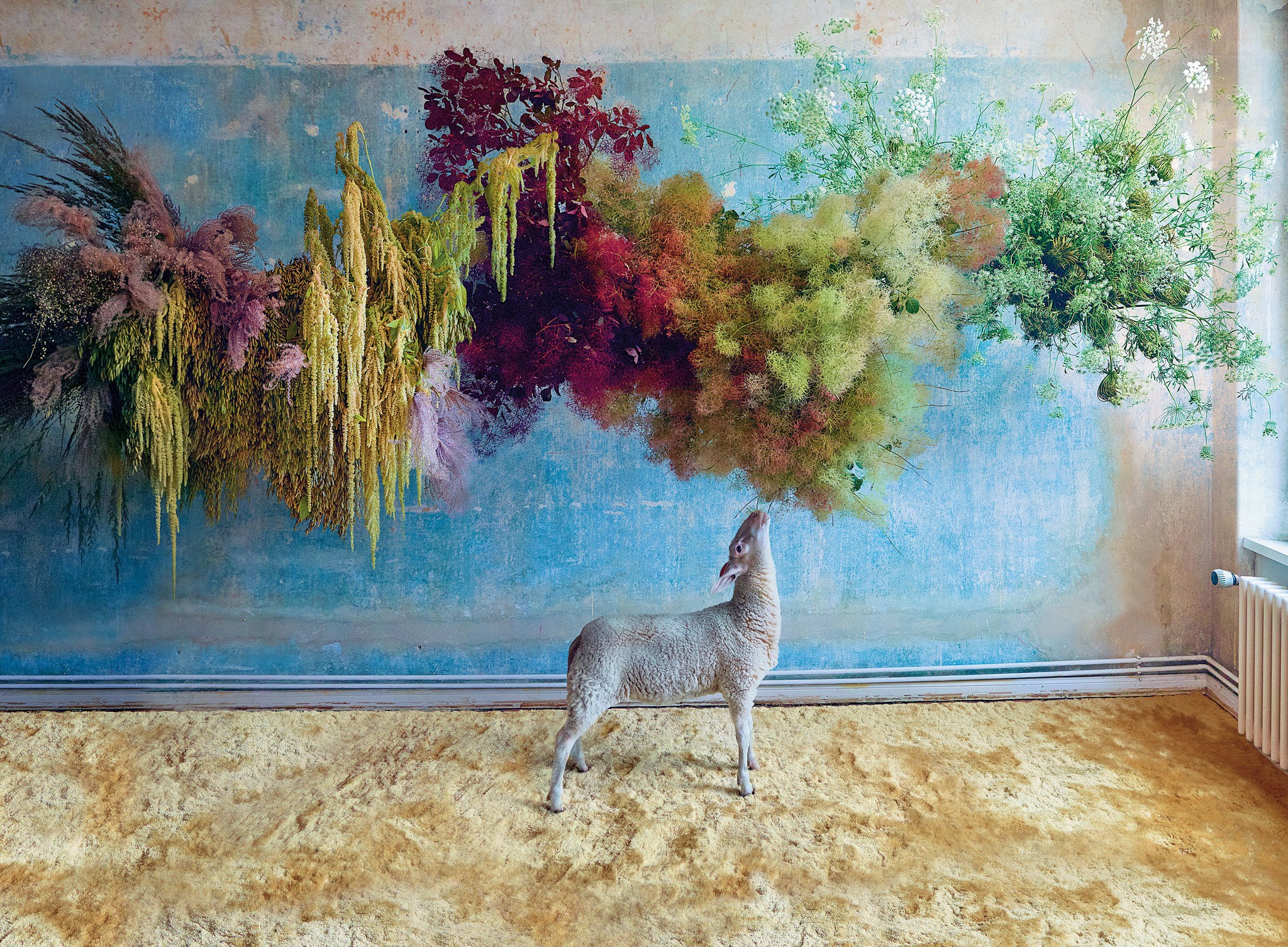A WEED IS UNWANTED: That is its definition. It is a plant that we have deemed to have no value because it contributes nothing to our life, neither nourishment nor beauty. Why should it help us when it doesn’t need us to survive, its seeds borne on the idlest gust, taking root and thriving in even the cruelest terrain? It stands wholly apart from human civilization, hardy and self-sustaining, mocking our hegemony, claiming the earth as its own. Worse, it is a predator, stealing resources — real estate, sunlight — from the plants we do value and rely on, crowding them out, threatening their existence and, by extension, ours.
A weed is never singular but an army. Its legions sweep across the land like the Golden Horde, “always three steps ahead of the gardener, traveling underground, seeding by the million, smothering all in their path,” says the British writer and landscape designer Isabel Bannerman. Her husband and partner, Julian Bannerman, frames it slightly less savagely: The garden “is a bit like having a party. What we call weeds are the uninvited guests.” And in the Swedish writer and illustrator Elsa Beskow’s picture book “The Flowers’ Festival,” originally published in 1914 as “Blomsterfesten i Tappan,” they appear as exactly that, a rabble of thistles, chickweed, nettles and burdock, “scoundrels and beggars and ragamuffins” all, consigned to a ditch outside the garden to glower while the violets and orchids revel. “But we’re flowers, too,” the weeds roar.
But their time has come. Now, weeds are not only welcome but guests of honor, proliferating with our blessing across front yards and formal gardens, shacking up with more “respectable” flowers in grand floral arrangements and shaggy bouquets and bringing a whiff of forest and meadow to 10-course tasting menus. This isn’t entirely new: The mid-20th-century English florist Constance Spry, a railway clerk’s daughter, was famed for heaping sprays of cow parsley at high-society weddings and debutante balls, and the revered English gardener Beth Chatto, who died in May, was nearly disqualified from one of her first horticultural shows for entering native flora that one judge ridiculed as weeds. But the current obsession with these unruly plants — among them smoke bush, with its blowsy, imprecise purplish puffs; little tufts of mimosa; and Queen Anne’s lace, which resembles a paralyzed mist — speaks to a larger cultural moment.
Something has shifted in “what we consider beautiful,” says the floral designer Sophia Moreno-Bunge of Isa Isa in Los Angeles. She’s drawn to weeds because they’re at once ubiquitous and invisible, such as the wild mustard that cloaks the city’s hillsides in spring, staining them an acid yellow — taken for granted as a backdrop but, in a vase, unrecognizable and thrillingly new. The Australian-born florist Ruby Barber plays with viewers’ expectations, making weeds, which she calls “the bullies of the plant world,” appear almost fragile in her creations for her Berlin-based botanical consultancy, Mary Lennox. She takes skinny stems of baby’s breath, an invasive species prone to infesting vacant lots (and cheap deli arrangements) and other discarded varieties, and arranges giant cloud-shaped bouquets that she inverts and suspends from ceilings in a perforated chandelier, the flowers subordinate to the spaces between them. A pouf of pampas grass, its plumes halfway between fur and feather, looks untethered and irresolute, belying its feral nature: The plant is banned from sale in parts of Australia, where it threatens habitats and endangered native trees. Barber’s fantasy is to make a bridal bouquet of dandelions in their final, full-moon, fuzzy-headed stage, just before they shed. She imagines the bouquet “slowly floating away as the bride walks down the aisle, each flower carrying a wish for the future” — and a hundred seeds to spawn a new generation.

Credit: www.nytimes.com
THAT WEEDS ARE suddenly being treated as the equals of roses and orchids (or as “it” flowers like the ever-chic peony or ranunculus) could be viewed as an upending of traditional hierarchies in parallel to the political turmoil of our time. Ralph Waldo Emerson wrote that a weed is just “a plant whose virtues have not yet been discovered,” but its name is already a pejorative. In Louise Glück’s 1992 poem “Witchgrass,” she speaks in the voice of the title plant, which is constantly being hunted and uprooted:
If you hate me so much
don’t bother to give me
a name: do you need
one more slur
in your language, another
way to blame
one tribe for everything —
The embrace of these often raggedy, embattled yet always triumphant plants also suggests a growing suspicion of the manicured and the immaculate, be it the studied perfection of the Instagram post or the blank sanctity of the mowed lawn, which the writer and activist Michael Pollan has described as “nature purged of sex and death.”
“It’s the story of the intrepid underdog,” says Emily Thompson, a floral designer in New York who builds her arrangements like narratives, out of unlikely encounters and occasionally belligerent characters: nettles, burdock, milkweed, wild grapes and cattails. She has no interest in cultivars “bred for uniformity and performance,” preferring plants with hardscrabble souls, capable of cruelty, such as the prickly species of greenbrier known to draw blood. Where other florists disregard the label of weed entirely, asserting that all plants are equal, Thompson uses them precisely because they have a bad reputation. She doesn’t think of them as monsters, but she likes to exaggerate their monstrosity, to showcase their invasive power rather than just toss in a few sprigs as wistful allusions to some lost pastoral idyll. “How dull to dilute them that way,” she says.
What a weed gives a floral arrangement is a sense of authenticity: “This really had a life somewhere that wasn’t on purpose and hasn’t had a human intervention,” Thompson says. This is true on the plate, too, where what matters most these days is provenance. “I don’t believe in weeds,” says Esben Holmboe Bang, the Danish-born chef of Maaemo in Oslo whose dishes reaffirm Norway’s union of forests and fjords. “A wild dandelion is as coveted as a white truffle.” The chef Jimmy Lau, of Shuko in New York, grew up foraging with his mother in Fujian, China, and now traverses Central Park searching for shepherd’s purse, whose low throb of pepper calls to mind a radish; nutty chickweed; yomogi (Japanese mugwort), a cousin to wormwood, coolly refreshing with a streak of bitterness; sour grass, its tang a shade shy of lime; and Japanese knotweed, whose hollow, crunchy stems are juicy and tart, like rhubarb. These might wind up on Shuko’s lofty $195 kaiseki menu, pickled as sunomono or fried into airy tempura, the weeds’ contours still distinct inside their sheer golden shell.
Note that knotweed (outside of Japan, where it has natural predators) is a thug and a scourge that many find unredeemable. See it sprout in the backyard and your property value crumbles; it can colonize all that it touches and, if left unchecked, could disembowel the neighborhood. But rather than simply kill it, Holmboe Bang says, “it’s delicious, so it’s better to eat it, no?”
Credit: www.nytimes.com

